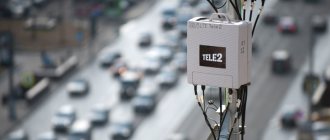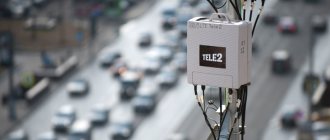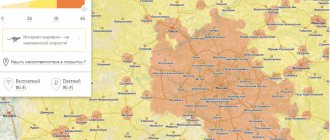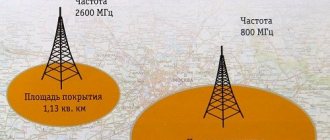Finding base stations with Google Earth Pro
We use Google’s “virtual globe” to search for base stations. Google Earth is known as "Planet Earth". Follow the link and install it on your computer - Google Earth Pro for Windows, Mac or Linux
Let's launch Planet Earth. Carefully, slowly, get acquainted with the information in the “Startup Tips” pop-up window and close it.
We admire our beautiful and vast planet for a few seconds. After that, in the upper left corner, in the search bar, enter the search query we are interested in. In my case, as an example, this is the Novosibirsk region, Moshkovsky district, Kuznetsovka village.
The program is smart, insensitive to the case of letters, so I type the text without capital letters - Kuznetsovka mosh... And “Google Planet” in the search bar gave the desired address. I select it and click on search.
Next, using the mouse wheel, I enlarge the image and find the object of interest. Let it be a local store where you urgently need to install the Internet.
In the toolbar, I click on “Add a label” and give it a name. I press “Ok”.
I chose the default icon for the label, you can choose any one you like. And also add important information for you to the “Description” tab. It will pop up on the map when you click on the icon.
Why know where cell towers are located?
Knowing the exact coordinates is of no use to the average subscriber - he will not even be able to distinguish the towers of one operator from another. But sometimes this data is necessary and important. Base station (BS) coordinates are required:
- When setting up directional antennas in a suburban area, the signal quality outside cities is low, which is why subscribers are forced to install transmitting and receiving antennas with amplifiers. These antennas require precise targeting to nearby BSs. The specialists involved in setting up this equipment know the coordinates of the towers. The same knowledge will be useful to those who decide to install the antenna themselves - the services of specialists are quite expensive (up to 4-5 thousand rubles);
- To set up indoor signal amplifiers - such devices are sold in communication stores and are directional antennas for desktop installation. We place the antenna on the windowsill, point it at the nearest BS, install a modem at the antenna’s focus and check the signal level - if the antenna is effective, the level will be higher, which will have a positive effect on the Internet speed;
- To choose a place to live - some people are afraid of base stations, preferring to live at some distance from them. Using special applications, you can clarify the coordinates of the nearest towers and select the optimal area for living.
Also, knowing the coordinates will help you find out whether communication from a particular operator will work in a given area.
Official websites of operators
Here are links to official maps of mobile operators:
- MTS - the page shows the service area in three standards, from 2G to LTE. Here you can also clarify plans for the development of fourth generation networks and see the coverage for the Internet of Things NB-IoT;
- MegaFon - network coverage map, including in the LTE-Advanced standard with speeds of up to 150 and 300 Mbit/s. Here you can also clarify the coverage at metro stations and the location of branded service offices. And one more map for determining the minimum speed for “Create Wi-Fi” tariff plans;
- Beeline is a universal map showing the location of offices and reflecting network coverage;
- Tele2 – coverage of 2G, 3G and 4G networks, as well as LTE 450 networks for high-speed Internet in remote areas (using modems from Skylink);
- The motive is a universal map of offices and coverage areas. Don't forget to check your service region.
Please note that there are no 2G networks from Tele2 in Moscow and the Moscow region. To access cellular communications, you will need devices that support 3G and 4G. The same applies to virtual operators working at Tele2 base stations in the capital and Moscow Region.
Special programs and applications
The most popular application for finding nearby base stations is Netmonitor. Shows the location of the nearest BS, provides a wealth of service information, and displays a map of the area. NetMonitor also supports displaying public Wi-Fi hotspots.
Another application, OpenSignal, gave good results. It has a built-in compass that allows you to get accurate orientation to the base stations of cellular operators. The signal strength at certain points is also displayed here - this data is collected from application users and will allow you to evaluate the real reception status.
Additional software for searching coordinates
Sometimes, the documentation (SES conclusions) contains the address where the operator’s BS is located. But when you enter these details into Google Earth Pro, sometimes the location is not displayed accurately. I recommend using Double GIS in parallel if your region is included in it.
When searching for BS on the ground using Google Earth Pro maps, sometimes you come across areas with a fuzzy image. In such cases, I use Yandex maps. Often, Yandex has much better pictures.
And at the end of the article, creative advertising for LG HD TV
How the curator of the “smart speaker” and voice assistant “Marvin” left MTS
— We are planning a restart. A new team has arrived, we are updating the development strategy for the voice assistant. “Marvin” as a character will remain, but it will be a whole family of smart assistants. Not just a smart speaker, the assistant will accompany clients in various life situations and services of the MTS ecosystem: smart home, My MTS application, in the Kion online cinema, contact center, in the car.
— Have you given up selling smart speakers?
— The speakers will appear in a new format. They will be partnerships; we do not plan to build our own factories. But the platform is completely ours, and it is already ready. Now we are separately working on everything related to the smart home and smart city. There are already hundreds of devices that can be connected to a smart home, dozens of partners and confidence that we can create a high-quality product to connect all this.
— Do you plan to negotiate with developers?
- Necessarily.
— Often developers themselves offer smart home services; many develop their own systems, for example PIK. Are you planning to compete with them?
— Why compete if you can enter into partnerships? The penetration of the service in Russia is now calculated at best in a few percent. In any case, the smart home that we produce for B2C must interact with any smart buildings. And I am sure that the market will force any manufacturers who work with smart buildings to have interfaces to any smart homes, otherwise it makes no sense.
— At the beginning of the year, MTS became the largest private wired Internet provider, overtaking ER-Telecom. The operator himself, according to our data, has been preparing for sale for some time. Is there any interest in this asset?
— ER-Telecom is certainly an interesting asset. We have been communicating for a long time and discussing various opportunities for interaction. But in our conversations today there are no topics about selling or buying.
— About Kion. Do you really believe, as previously predicted, that the company will be able to become one of the top three online cinema leaders in 2023, given the strong competition?
— Kion management has set itself this goal by the end of 2023, and we support their ambitions. At the same time, you are right: competition in the online cinema market in Russia is only intensifying and in the next couple of years we will see a “bloodbath”. But I am confident that Kion will successfully overcome this period.
TABLE - LEGENDING “standards, frequency ranges and ARFCN”
| Standard name | Generation | Frequency ranges | ARFCN value (UARFCN or EARFСN)* | |
| GSM-900 | 2G | 900 MHz (Band  | 0.. 124 | |
| GSM-1800 | 2G | 1800 MHz (Band 3) | 512.. 885 | |
| UMTS-900 | 3G | 900 MHz (Band  | 2937.. 2712 | |
| UMTS-2100 | 3G | 2100 MHz (Band 1) | 10562.. 10838 | |
| LTE-800 | 4G | 800 MHz (Band 20) | 6150.. 6449 | |
| LTE-1800 | 4G | 1800 MHz (Band 3) | 1200.. 1949 | |
| LTE2600 FDD ** | 4G | 2600 MHz (Band 7) | 2750.. 3449 | |
| LTE2600 TDD *** | 4G | 2600 MHz (Band 38) | 37750.. 38249 | |
* — Absolute radio frequency range of values. ** - FDD (Frequency Division Duplex) uses frequency division of DL / UL channels, which makes it possible to amplify this signal by an active amplifier (repeater). *** - TDD (Time Division Duplex) uses time division of DL / UL channels, which makes it impossible to amplify this signal with an active amplifier (repeater).
To strengthen the cellular signal, we recommend paying attention to VEGATEL cellular amplifiers and repeaters.
- How to measure cellular signal on iPhone in 3G standard.
- How to measure cellular signal on iPhone in 4G standard.
Vyacheslav Konstantinovich Nikolaev
Private bussiness
Born in 1970. In 1992 he graduated from the Faculty of Computational Mathematics and Cybernetics of Moscow State University. Lomonosov. In 2002–2004, he was vice president of the TRUST investment bank. At TRUST Bank, and also earlier, since 2000, at the Renaissance Capital investment group, he supervised analytics of the telecommunications sector. From 1997 to 2000, he worked as a consultant in the European analytical agencies European Public Policy Advisers (UK) and J'son and Partners (Sweden). Since April 2020 - First Vice President for Customer Experience, Marketing and Ecosystem Development of the MTS Group. Since 2021, he has served as SVP of Customer Experience and Marketing. From 2017 to 2021 - MTS Vice President for Marketing. Previously, he worked for the company as a mass market marketing director for six years. He began working at MTS in 2004 in the sales and service unit of the MTS group, then held senior positions in the Russian division of MTS.
Coverage of the territory of the Russian Federation with mobile 3G/4G Internet
Compared to the successes of other countries, 4G coverage in Russia leaves much to be desired. For example, in Japan this figure reaches 75%, in European countries 56%. The world leader is South Korea, where high-speed access covers 80% of the country's area.
However, given that the area of the Russian Federation is huge, and part of the territory is sparsely populated, the indicator does not look so pessimistic. And if we take into account the fact that domestic communications remain one of the cheapest, then the situation moves from the unattractive category to the promising category.
The highest level of coverage is concentrated in Moscow and St. Petersburg, the coverage density of regional centers is growing every year, high-quality mobile Internet is gradually spreading across Siberia, the Far East and other remote regions.
PJSC MTS
Company profile
founded on October 28, 1993 as a closed joint stock company.
The founders were MGTS, Deutsche Telekom, Siemens and a number of other shareholders. Commercial operation of the network began on July 7, 1994 in Moscow. In 1996, AFK Sistema bought a controlling stake from the Russian owners of MTS, and later German investors sold their stakes on the stock exchange. Since 2011, the company has been present in all regions of the Russian Federation. More than 79 million Russian subscribers use MTS services. MTS subsidiaries in Belarus and Armenia serve about 8 million subscribers. MTS Bank has more than 2 million active users. Since 2004, MTS has been selling mobile phones under its own brand. The group's companies employ more than 62 thousand people. The number of communication stores is about 5.3 thousand. In 2021, the company’s revenue amounted to 494.9 billion rubles, net profit - 61.4 billion rubles. Interviewed by Anastasia Gavrilyuk and Yulia Tishina
Expansion and prospects
At the moment, the active expansion of Tele 2 networks has stopped. It is unlikely that this operator will come to new regions of Russia. At the same time, the company continues to actively improve existing equipment. There is also an active development of new tariff plans that are very attractive to potential subscribers.
Tele 2 is a telecom operator represented in most of the constituent entities of Russia. It provides high-quality communication services. The transition to the 4G standard has led to an even greater increase in the level of quality of service.











